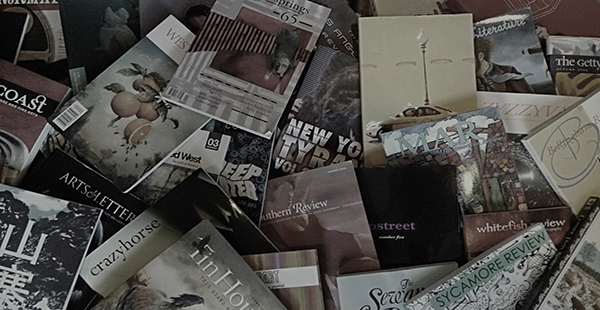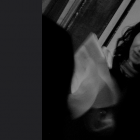The Best Short Story I Read in a Lit Mag This Week: “The Howler” by LaTanya McQueen

In modern society, what often constitutes progress is the dulling elimination of those instinctual parts of our being that aren’t beholden to conscious thought—say, our hard-wired physical and emotional responses. In “The Howler” (Permafrost) LaTanya McQueen explores the potentially redemptive nature of those impulses that lay beyond our control.
McQueen begins the story from the perspective of the unnamed boy narrator, with a description of the phenomenon the title suggests.
It started with a tickle in his chest, almost like an itch, until the feeling grew. He found himself opening his mouth wide, his lungs filling with air, the muscles in his throat constricted, and then it came. A howl, deep and guttural. He felt the vibration against his vocal chords. He imagined it as a response to a dream, perhaps still part of the dream itself, and so he got up from the bed and stretched and then went into the kitchen to find his stepmother.
What McQueen establishes is not just the physicality of the howl, but its relationship to the boy’s waking mind, drawn here more as instinctual than premeditated. That he imagines what it is, instead of knowing, speaks to the fact that both the cause and experience of the howl are happening on a level different than his conscious mind.
This naturally forms the plot question why, which McQueen begins revealing in part at the end of the second section, after he howls both in his (also unnamed) stepmother’s presence, and then uncontrollably at school. But before we address that, I want to note that McQueen, soon after the first section, switches perspectives from the boy to the stepmother.
The perspective shift not only allows us access to the adult conversations about the boy’s howling without having it filtered through the child’s perspective, but also works well to answer what might have been a main plot question had we not experienced the howl from the boy’s perspective: whether the uncontrolled howling at school was a behavior problem within the child’s control.
The potential cause of the howling is revealed when the stepmother visits the principal of the boy’s school after being called to come pick her stepson up.
“Our nurse checked him out and she said he was fine physically, so it’s got to be, you know, something else.”
She nodded, understanding his implication, and he smiled with relief.
“Here’s some materials for you to consider.” He handed her a stack of pamphlets. Helping Children Cope With Grief. Teaching Your Child About Loss. The Grief Journey of A Child. She remembered these from before. They were still sitting where she’d placed them—cluttered on top of the fridge next to old bills and expired coupons she’d kept and forgotten about.
McQueen goes on to draw a clear link between the howling and the death of the boy’s father/stepmother’s husband. He’s mourning. But there’s also a link that brings out the wilder possibilities suggested by the title. We discover that though the boy’s father died of a heart attack, what happened afterwards was nothing short of macabre.
In the morning, noticing the empty space next to her, she got out of bed to look for him and saw the horror outside. The blood-stained grass. The dried bits of what was left of his entrails scattered across the lawn. Her husband’s flesh gnawed on like jerky, the bones broken—some of the bones even taken by the wolves as a snack for later.
Had he known? That morning, her first instinct was to look for him, to make sure he had not gone outside and seen. She went to his bedroom and was relieved to see he was in bed asleep. At least he had not seen, and that was the comfort she kept with her as she pulled on the curtains and called the police.
She had not cried then or on any of the days after.
With the wolves, McQueen adds complexity to the dark, mournful, animal/instinctual nature of a howl, contrasted bitterly with the pamphlets provided by the principal, which now seem trite in comparison—if they didn’t already before.
But while the stepmother’s instinct wasn’t to howl, notice above what was: the desire to make sure the boy was safe. This has a bearing on the end, as we find what the stepmother had at one point considered.
“She had thought about getting rid of him, telling him she was unfit and abandoning him at a group home for orphans. She’d found one in the city and on a hot afternoon she drove there to see, parking her car at a butcher’s nearby. The worker inside eyed her through the glass as she jaywalked across street to the home. There were patches of dried grass among the dirt.”
She doesn’t give him away. In fact, by the end of the story—which I won’t ruin here—it’s the boy’s howling that both draws them closer together as a family, as well as opens up avenues for her to mourn as well.
Not lost is the commentary on our modern, post-enlightenment world: it’s often our wilder instincts, not our nuanced thoughts or societal conventions, that bring us deeper into relationship and healing, amidst tragedy.
About Author
Ross McMeekin’s stories appear or are forthcoming in journals such as Virginia Quarterly Review, Post Road Magazine, Shenandoah, Redivider, and Tin House (online). He edits the literary journal Spartan. He has received fellowships from both the Jack Straw Cultural Center and Richard Hugo House in Seattle.



